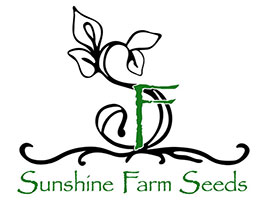Welcome to the 2018 Growing Season
The swing of the pendulum seems evident in so many aspects of our year here in the Okanagan Valley of southern BC. With the weather extremes from floods in the spring to drought through the summer, Our gardens and farms swing through these seasons as soils, changing as they have done for millions of years. The floods deposit silts and sands, organic matter and other soils to replenish minerals, organic compounds and tilth to the constantly evolving landscape. They can cause the relocation of gophers and other rodents away from your garden or field, or create an environment inhospitable to the metamorphosis of destructive pests like grasshoppers? Droughts remind us to cherish the water we do have, they encourage forest fires which consume biomass, deposit biochar to sequester carbon from the atmosphere, and allow for the regeneration and proliferation of differing species of forest and field flora and fauna. Aside from the cost to artificial human constructs including agriculture, drought can be a good thing. Drought can strengthen the genetics of resilient plants and animals which tolerate dry conditions. We save seed from the most successful, best performing plants from these extreme weather years. Our late plantings of potatoes performed well because the wireworms ( larva of the click beetle) had migrated down into the subsoils by the time we planted. We saw almost no tomato hornworm this year, flea beetle was almost absent by the time we got on our fields which had been too wet to plant. The long hot days of summer meant the rapid maturing of seed crops like lettuces, annual brassicas like mustard greens and radish and biennial seed crops like parsnips, beets and carrots. The negative side of the drought on the farm here includes the extensive use of irrigation, the damage from extra thirsty mule deer who ate the fruits of crops like tomatoes, squash, peppers, beans just for their moisture content. Every year here at the farm comes with its challenges. Yes we can grow in artificial environments like cold frames, poly tunnels and greenhouses but as some of the chefs we work with say ‘ the flavour just isn’t there when compared to outdoor grown vegetables and greens’. The greens are limp and won’t hold a vinaigrette well. It has been shown that indoor grown vegetables contain fewer soluble solids and more water. More vitamins are indicated by a stronger flavour which is evident in outdoor grown greens and especially tomatoes. We still grow greens through the winter in a coldframe, which is better than having no greens, but as soon as the soil outdoors warms enough in the spring we look to our fall planted greens to provide us with those deep green hardy mustards, kales, spinach, and cresses which wait under the snow all winter to complete their growing cycles. Don’t forget to plant these in September for autumn harvest and then the early spring harvest as well. We wish you well in your gardens for 2018, don’t sweat the challenges, learn from them and enjoy the bounty of your successes.
Jon Alcock
